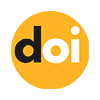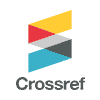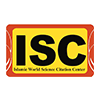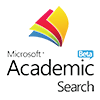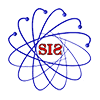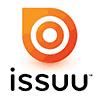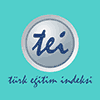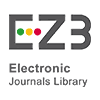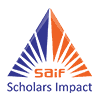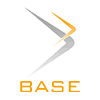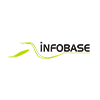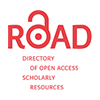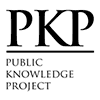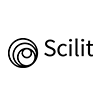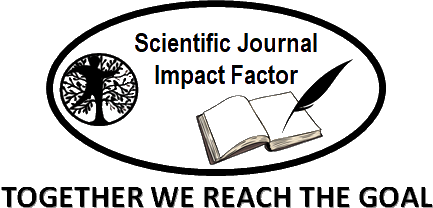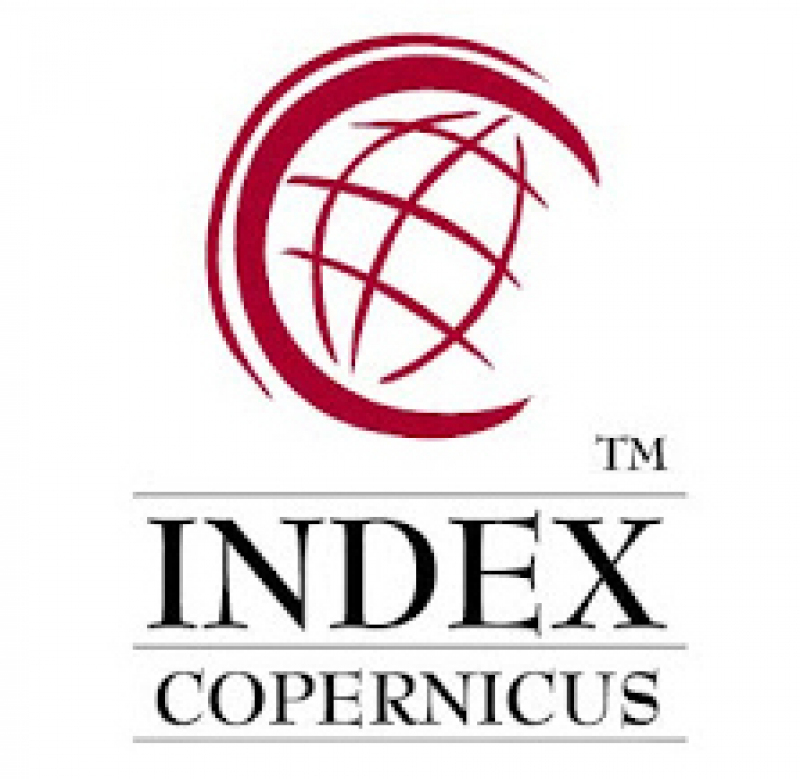Teachers' Perceptions of the Implementation of the Blue Ocean Strategy at LKP Mathematics Indonesia Wonogiri in Developing Numeracy Competence in Mathematics: A Case Study in Boyolali
Abstract
Keywords
Full Text:
PDFReferences
Aboagye, E. (2020). Transitioning from Face-to-Face to Online Instruction in the COVID-19 Era: Challenges of Tutors at Colleges of Education in Ghana. Social Education Research, 2(1), 8–17. https://doi.org/10.37256/ser.212021545
Alim, I. N. M., & Aryani, Z. (2024). Inovasi Pengembangan Kurikulum dalam Meningkatkan Kualitas Pembelajaran di Era Digital. Jurnal Insan Cita Pendidikan, 2(2), 1–4.
Alimuddin, A. M., & Yuzrizal. (2020). Jurnal Pendidikan dan Pemikiran Islam. Jurnal Pendidikan Dan Pemikiran Islam, 7(2), 113–122. http://conference.kuis.edu.my/pasak2017/images/prosiding/nilaisejagat/10-MAAD-AHMAD.pdf
Ambarwati, E. K., Dewi, I. P., Puspitaloka, N., Utami, P. P., & Ahmad, Y. B. (2023). Penguatan Kompetensi Profesional Guru Dalam Integrasi Teknologi Pembelajaran. Selaraprang, 7(4), 2407–2411.
Aziz, M. Ridwan & Safitri, M. (2023). Analisis Kemampuan Literasi Matematika Siswa SMA di Kecamatan Ngemplak Boyolali. Prosiding Seminar Nasional Matematika.
BBMP. (2023). Profil Pendidikan Kabupaten Boyolali. Balai Besar Penjaminan Mutu Pendidikan Provinsi Jawa Tengah.
Benu, A. B. N., Ga, P. R., Koroh, T. R., Wonda, H., Devi, R. A., & Bulu, V. (2024). Kemampuan Numerasi Level 3; Survei terhadap Peserta Didik Sekolah Dasar di Kota Kupang. Muallimuna : Jurnal Madrasah Ibtidaiyah, 9(2), 55. https://doi.org/10.31602/muallimuna.v9i2.13925
Bourletidis, D. (2014). The Strategic Model of Innovation Clusters : Implementation of Blue Ocean Strategy in a typical Greek Region. Procedia - Social and Behavioral Sciences, 148, 645–652. https://doi.org/10.1016/j.sbspro.2014.07.093
Bourletidis, K. (2013). The Strategic Management of Market Information to SMEs during Economic Crisis. Procedia - Social and Behavioral Sciences, 73(February 2013), 598–606. https://doi.org/10.1016/j.sbspro.2013.02.096
Çalışkan, G., & İzmirli, Ö. Ş. (2020). Teachers’ Communication Channels In The Innovation-Decision Process. Egitim ve Bilim, 45(203). https://doi.org/https://doi.org/10.15390/EB.2020.8611
Chandrasoma, J., & Chu, L. F. (2016). Teaching the 21st century learner: Innovative strategies and practical implementation. International Anesthesiology Clinics, 54(3), 35–53. https://doi.org/10.1097/AIA.0000000000000108
Clements, D. H., & Sarama, J. (2021). Learning and Teaching Early Math: The Learning Trajectories Approach (3rd ed.). Routledge.
Coffey, P., & Sharpe, R. (2023). An investigation into the teaching of numeracy in subjects other than mathematics across the curriculum. International Journal of Mathematical Education in Science and Technology, 54(5), 860–887. https://doi.org/10.1080/0020739X.2021.1978570
Connolly, C., Carr, E., & Knox, S. (2023). Diving deep into numeracy, cross-curricular professional development. International Journal of Mathematical Education in Science and Technology, 54(6), 1034–1053.
Cooper, D. R & Schindler, P. S. (2014). Business Research Methods. Sage Publication.
Creswell, J. W. (2014). Research Design: Qualitative, Quantitative, and Mixed Methods Approaches (Fourth Edition). United States of America: SAGE Publications.
Cropley, A. (2019). Introduction to Qualitative Research Methods. Zinatne. https://doi.org/https://doi.org/10.13140/RG.2.1.3095.6888
Cziesielski, M. J., Duarte, C. M., Aalismail, N., Al-Hafedh, Y., Anton, A., Baalkhuyur, F., Baker, A. C., Balke, T., Baums, I. B., Berumen, M., Chalastani, V. I., Cornwell, B., Daffonchio, D., Diele, K., Farooq, E., Gattuso, J. P., He, S., Lovelock, C. E., Mcleod, E., … Aranda, M. (2021). Investing in Blue Natural Capital to Secure a Future for the Red Sea Ecosystems. Frontiers in Marine Science, 7(January). https://doi.org/10.3389/fmars.2020.603722
Di Lonardo Burr, S. M., Turner, J., Nietmann, J., & Lefevre, J. A. (2021). When does the story matter? No evidence for the foregrounding hypothesis in math story problems. Journal of Numerical Cognition, 7(3), 259–274. https://doi.org/10.5964/jnc.6053
Dole, S., & Geiger, V. (2020). Numeracy across the curriculum: Research-based strategies for enhancing teaching and learning. Routledge.
Ekowati, D. W., Astuti, Y. P., Utami, I. W. P., Mukhlishina, I., & Suwandayani, B. I. (2019). Literasi Numerasi di SD Muhammadiyah. ELSE (Elementary School Education Journal): Jurnal Pendidikan Dan Pembelajaran Sekolah Dasar, 3(1), 93–101. https://doi.org/https://doi.org/10.30651/else.v3i1.2541
Fyfe, E. R., McNeil, N. M., Rittle-Johnson, B., & DeCaro, M. S. (2022). The Role of Problem-Solving in Learning Mathematics: A Cognitive Science Perspective. Cambridge University Press.
Goos, M., Geiger, V., & Dole, S. (2014). Transforming professional practice in numeracy teaching. Transforming Mathematics Instruction: Multiple Approaches and Practices, 81–102.
Gunbas, N. (2015). Students’ mathematics word problem-solving achievement in a computer-based story. Journal of Computer Assisted Learning, 31(1), 78–95. https://doi.org/https://doi.org/10.1111/jcal.12067
Hamra, Y., & Gassabi, I. (2021). Adopting Blue Ocean Strategy to break the competition and create value innovation-case study of Sun Circus company. مجلة العلوم الإدارية والمالية, 5(2), 440–454.
Have, P. Ten. (2004). Qualitative Research and Ethnomethodology. SAGE Publication Ltd.
Hazimah, G. F., & Sutisna, M. R. (2023). Analisis Faktor Yang Mempengaruhi Rendahnya Tingkat Pemahaman Numerasi Siswa Kelas 5 SDN 192 Ciburuy. EL-Muhbib: Jurnal Pemikiran Dan Penelitian Pendidikan Dasar, 7(1), 10–19.
Helmer, J., Huynh, T.-M.-T., & Rossano-Rivero, S. (2022). Teaching Digital Innovation Processes for Services in Higher Education. Procedia Computer Science, 207, 3469–3478. https://doi.org/https://doi.org/10.1016/j.procs.2022.09.405
Imron, Pramono, Suwito Eko, Rusilowati, Ani, & S. (2022). Program Literasi dan Numerasi dalam Perspektif Pendidikan Guru Penggerak. Prosiding Seminar Nasional Pascasarjana, 1131–1139.
Jiménez-Bucarey, C., Acevedo-Duque, Á., Müller-Pérez, S., Aguilar-Gallardo, L., Mora-Moscoso, M., & Vargas, E. C. (2021). Student’s satisfaction of the quality of online learning in higher education: An empirical study. Sustainability (Switzerland), 13(21). https://doi.org/10.3390/su132111960
Joubert, Y. T., & Snyman, A. M. (2018). Challenges Experienced with Online Tutoring in an ODL Institution. Progressio, 39(1), 126–145. https://doi.org/10.25159/0256-8853/2139
Kay, J. E. (2016). Perspectives on teachers’ numeracy, investigated via examination of comment and conversation. University of Bolton.
Kevlin, K. (2023). Mathematical Thinking: Innovation in Learning and Teaching. Spinger.
Khodeir, N. A., Elazhary, H., & Wanas, N. (2018). Generating story problems via controlled parameters in a web-based intelligent tutoring system. The International Journal of Information and Learning Technology, 35(3), 199–216. https://doi.org/10.1108/IJILT-09-2017-0085
Khoerunnisa, K., Hamdu, G., & Nuryadin, A. (2024). Analisis Kemampuan Siswa Kelas Iv Dalam Menyelesaikan Soal Literasi Dan Numerasi Menggunakan Pemodelan Rasch. Jurnal Pendidikan Dasar Flobamorata, 5(1), 18–24. https://doi.org/10.51494/jpdf.v5i1.1085
Kim, H., Sefcik, J., & Bradway, C. (2017). Characteristics of Qualitative Descriptive Studies: A Systematic Review. Research in Nursing and Health, 40(1), 23–42.
Kim, W. C. (2005). Blue ocean strategy: from theory to practice. California Management Review, 47(3), 105–121.
Kim, W. C., & Mauborgne Renee. (2016). Blue Ocean Strategy Expanded Edition. Penerbit Naura.
Kompella, L. (2024). Service innovations, value-driven business model, and institute growth: insights from a higher-education institute. International Journal of Educational Management, 38(6), 1735–1751. https://doi.org/https://doi.org/10.1108/IJEM-06-2023-0279
Kuswara, K. (2024). Evaluasi Program Pelatihan Guru Terhadap Peningkatan Keterampilan Mengajar Dan Prestasi Akademik Siswa. Jurnal Pendidikan Indonesia, 5(8), 443–449. https://doi.org/10.59141/japendi.v5i8.2714
Lase, Y. (2021). Application of Contextual Teaching and Learning Approaches to Improve Students’ Mathematical Problem Solving Skills During the Covid-19 Pandemic. January. https://www.researchgate.net/profile/Yami-Lase/publication/348215682_Application_of_Contextual_Teaching_And_Learning_Approaches_to_Improve_Students’_Mathematical_Problem_Solving_Skills_During_the_Covid-19_Pandemic/links/5ff403e5299bf14088702c29/Applicatio
Leech, Nancy L. & Onwuegbuzie, A. J. (2007). An Array of Qualitative Data Analysis Tools: A Call for Data Analysis Triangulation. School Psychology Quarterly, 22(4), 557–584.
Leila, M., & Maryam, T. (2018). Explaining the requirements for teachers development based on professional competencies approach. Educational Research and Reviews, 13(14), 564–569. https://doi.org/10.5897/err2018.3583
Linda Kusnita, K. (2019). Blue Ocean Strategy di Industri Perhotelan. Jurnal Manajemen Bisnis, 16(3), 122. https://doi.org/10.38043/jmb.v16i3.2236
Mangkuwibawa, H., Ramdhan, D. F., Mahmud, M. R., Siswanto, C. R., & Supriyadi, E. (2024). The Effect of Math Anxiety on Students’ Numeration Literacy Ability. MUDARRISA: Jurnal Kajian Pendidikan Islam, 16(1), 77–101.
Miles, M.B, Huberman, A.M, & Saldana, J. (2014). Qualitative Data Analysis, A Methods Sourcebook, Edition 3. Sage Publications.
Mirghaderi, S. A., Sheikh Aboumasoudi, A., & Amindoust, A. (2023). Developing an open innovation model in the startup ecosystem industries based on the attitude of organizational resilience and blue ocean strategy. Computers & Industrial Engineering, 181, 109301. https://doi.org/https://doi.org/10.1016/j.cie.2023.109301
Muniri, M., Samsul Bakri, Karim, S., & Santiago, P. V. da S. (2023). Profile of Student Numerical Ability in Higher Order Thinking Skills (HOTS) Problem-Solving. Numerical: Jurnal Matematika Dan Pendidikan Matematika, 7(1), 177–194. https://doi.org/10.25217/numerical.v7i1.3470
Nguyen, N. T. L. (2023). How to develop four competencies for teacher educators. Frontiers in Education, 8(April), 1–13. https://doi.org/10.3389/feduc.2023.1147143
Nikabadi, M. S., & Zamani, L. (2016). A combination mathematical model (FA, AHP, FARAS) for ranking the effective factors on strategic outsourcing in supply chain of small and medium manufacturing enterprises. International Journal of Globalisation and Small Business, 8(2), 131–157.
Novitasari, Meggy, Sutama, Narimo, Sabar, & H. (2023). Pemberdayaan GuruSekolah Dasar Muhammadiyah dalam Pembudayaan Literasi Numerasi Era Pandemi Covid 19. Jurnal Warta LPM, 26(1), 85–94. https://doi.org/https://doi.org/10.23917/warta.v26i1.621
Okoro, C. S., Takawira, O., & Baur, P. (2021). An assessment of tutoring performance, challenges and support during COVID-19: A qualitative study in a South African university. Journal of University Teaching and Learning Practice, 18(8). https://doi.org/10.53761/1.18.8.4
Perdana, R., & Suswandari, M. (2021). Literasi Numerasi dalam Pembelajaran Tematik Siswa Kelas Atas Sekolah Dasar. Bsis: Mathematics Education Journal, 3(1), 9–20. https://doi.org/https://doi.org/10.32585/absis.v3i1.1385
Poewanto, B., Arwadi, F., & Samad, M. A. (2024). Pemberdayaan Guru SD melalui Pelatihan Literasi Numerasi dan Pembuatan Alat Peraga Numerasi. ADMA : Jurnal Pengabdian Dan Pemberdayaan Masyarakat, 4(2), 451–462. https://doi.org/10.30812/adma.v4i2.3356
Prasetiyo, W. H., Sari, B. I., Rahmawati, N., & Pambudi, G. (2022). Peningkatan Kompetensi Digital bagi Guru Muhammadiyah dalam Menghadapi Society 5.0. Warta LPM, 25(1), 91–100. https://doi.org/10.23917/warta.v25i1.601
Rerngrit, Y., Pacharawit, C., & Kochaporn, N. (2015). Developing competency of teachers in basic education schools. Educational Research and Reviews, 10(12), 1758–1765. https://doi.org/10.5897/err2015.2194
Rohmah, A. N., Sutama, S., Hidayati, Y. M., Fauziati, E., & Rahmawati, L. E. (2022). Planning for Cultivation Numerical Literacy in Mathematics Learning for Minimum Competency Assessment (AKM) in Elementary Schools. Mimbar Sekolah Dasar, 9(3), 503–516. https://doi.org/10.53400/mimbar-sd.v9i3.51774
Saidi, A., & Habibi, M. (2022). Descriptive Analysis of Human Resource Development Through Motivation and Training as Well As Supporting and Inhibiting Factors. Daengku: Journal of Humanities and Social Sciences Innovation, 2(4), 24–33. https://doi.org/https://doi.org/10.35877/454ri.daengku1107
Saleh, I. T., Muhidin, M., Zakiah, Qiqi Yuliati, Erihadiana, M., & Suhartini, A. (2021). Karakteristik, Proses Keputusan, Difusi, Diseminasi dan Strategi Inovasi Pendidikan. Reslaj : Religion Education Social Laa Roiba Journal, 4(1), 83–97. https://doi.org/https://doi.org/10.47467/reslaj.v4i1.453
Salvia, N. Z., Sabrina, F. P., & Maula, I. (2022). Analisis Kemampuan Literasi Numerasi Peserta Didik Ditinjau dari Kecemasan Matematika. Prosandika.
Sekaran, U., & Bougie, R. (2016). Research Methods for Business: A Skill-Building Approach. John Wiley & Sons Ltd.
Setiawan, B., Muharani, I. N., Arifin, M. Z., & Ardianto, D. (2024). Problematic Numerical Literacy in Elementary Schools : Systematic Literature Review. Inventa : Jurnal Pendidikan Guru Sekolah Dasar, 8(1), 55–65.
Setiyawati, E., Fauziati, E., Darsinah, Minsih, & Prastiwi, Y. (2022). Problem Solving Errors in Mathematics Story Questions. JPI (Jurnal Pendidikan Indonesia), 11(3), 466–479. https://doi.org/10.23887/jpiundiksha.v11i3.46980
Silitonga, R. H. Y. (2023). Development of numeracy skills: Analysis of students in junior high schools in Ambon City based on teacher’s perspective. Alifmatika: Jurnal Pendidikan Dan Pembelajaran Matematika, 5(2), 298–310.
Siregar, P. (2022). Pelaksanaan Pembelajaran Literasi Numerasi Pada Siswa Kelas 5b SD Negeri 101880 Aek Godang Padang Lawas Utara. Al-Madrasah: Jurnal Pendidikan Madrasah Ibtidaiyah, 6(2), 366–372. https://doi.org/https://doi.org/10.35931/am.v6i2.944
Sugiyono. (2018). Metode Penelitian Kualitatif. Bandung: Alfabeta.
Sumaryanta, Mardapi, D., Sugiman, & Herawan, T. (2018). Assessing Teacher Competence and Its Follow-up to Support Professional Development Sustainability. Journal of Teacher Education for Sustainability, 20(1), 106–123. https://doi.org/https://doi.org/10.2478/jtes-2018-0007
Sunusi, Z., Setiawan, A., Hazirah, N., & Korespondensi, P. (2024). Pendampingan Guru Madrasah Banua Sendana untuk Meningkatkan Kompetensi Pedagogik melalui Implementasi Brain Based Learning. 7(1), 36–45.
Tezer, M., & Kivanc, E. (2012). The Relationship between the Attitudes Towards Mathematics and Music of Prospective Teachers. Procedia - Social and Behavioral Sciences, 46(Edwards 1996), 384–389. https://doi.org/10.1016/j.sbspro.2012.05.127
Tuan, B. A., McAleer, M., Dang, N. T. T., & Pho, K.-H. (2019). Developing Formulas for Quick Calculation of Polyhedron Volume in Spatial Geometry: Application to Vietnam. Journal of Reviews on Global Economics, 8, 815–837. https://doi.org/10.6000/1929-7092.2019.08.71
Tymms, M., & Peters, J. (2020). Losing oneself: Tutorial innovations as potential drivers of extrinsic motivation and poor wellbeing in university students. Pastoral Care in Education, 38(1), 42–63.
Walkington, C., Clinton, V., & Sparks, A. (2019). The effect of language modification of mathematics story problems on problem-solving in online homework. Instructional Science, 47(5), 499–529. https://doi.org/10.1007/s11251-019-09481-6
Wang, Y., Zhang, J., & Mao, Y. (2024). Harmonizing mathematics: Unveiling the impact of music integration on academic performance – A meta-analysis. Thinking Skills and Creativity, 52, 101554. https://doi.org/https://doi.org/10.1016/j.tsc.2024.101554
You, J., Yao, Y.-W., & Wang, Z. (2024). A Quick Calculation Method for Radiation Pattern of Submillimeter Telescope with Deformation and Displacement. Research in Astronomy and Astrophysics, 24(3), 35020. https://doi.org/10.1088/1674-4527/ad256e
Yusnanto, T., Nada, A. R., Ekaristia, B. W. T., Dianurt, M., Anggraeni, R. V., & Maharani, Z. (2024). Pelatihan Guru Dan Sosialisasi Literasi Numerasi Untuk Meningkatkan Pengajaran Di SDN 1 Wonolelo Kabupaten Magelang Provinsi Jawa Tengah:(Teacher Training and Numeracy Literacy Socialization to Improve Teaching at SDN 1 Wonolelo, Magelang Regency, Central. AL HAYAT: Jurnal Pengabdian Masyarakat, 2(2), 114–120.
Zhou, Y., & Lian, J. (2024). The effect of music training on students’ mathematics and physics development at middle schools in China: A longitudinal study. Heliyon, 10(6), 1–7. https://doi.org/10.1016/j.heliyon.2024.e27702
DOI: http://dx.doi.org/10.18415/ijmmu.v12i5.6708
Refbacks
- There are currently no refbacks.
Copyright (c) 2025 International Journal of Multicultural and Multireligious Understanding

This work is licensed under a Creative Commons Attribution-NonCommercial-NoDerivatives 4.0 International License.
https://ijmmu.com
editor@ijmmu.com
facebook.com/ijmmu
Copyright © 2014-2018 IJMMU. All rights reserved.





